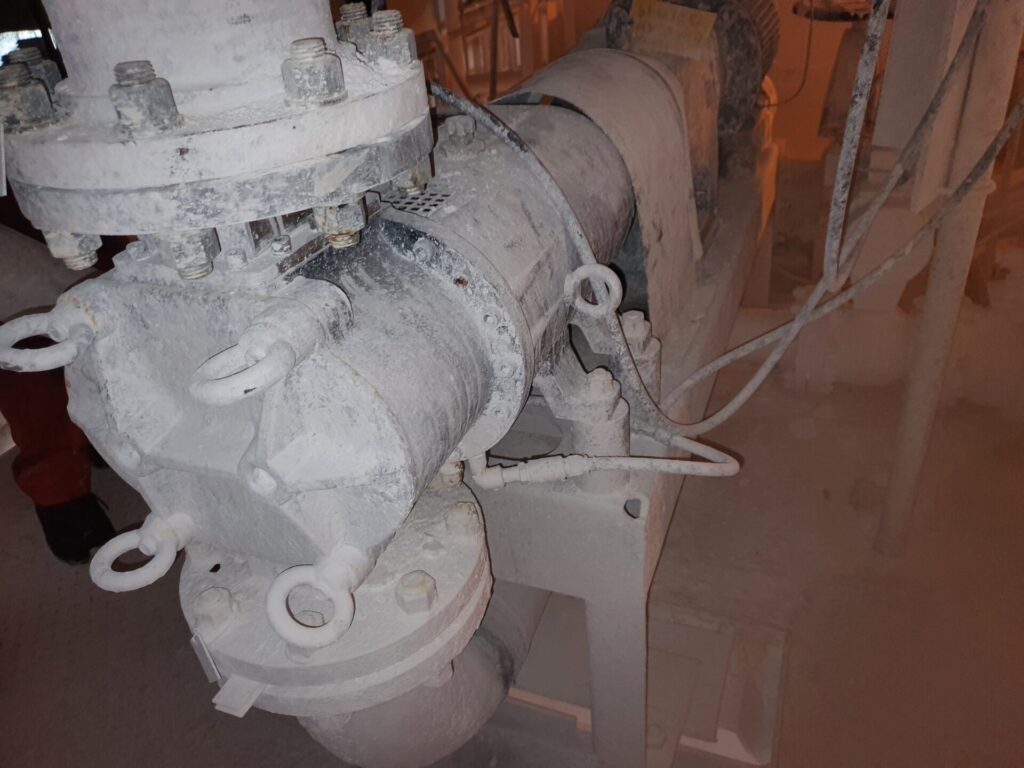Pumping Titanium Dioxide isn’t the easiest. Used primarily for consumer electrical goods with its brilliant white colour, this slurry solution of titanium dioxide powder and base/carrier fluid is extremely abrasive. Certainly not for any old pump, but when the cost of a brand-new replacement – so long as of course it can do the job (!) is cheaper than a repair, then it’s a true no brainer not to improve the economics of the process.
Such a scenario presented itself recently to a rotary lobe pump manufacturer, who has already created a very successful track record at plants in the same areas of industrial Humberside and North Lincolnshire. As a low-friction, almost pulsation-free pump, it would meet the requirement for Titanium Dioxide to be gentle on the important pigments, but what about the pressures and the seals?
“We knew that with our ONIXline pumps, we could handle demanding high pressures up to 16 bar”, said David Brown, Managing Director of Borger UK. “And with no wearing parts, plus Maintenance-In-Place, we were very confident that servicing and repair costs would be significantly lower; almost a drop in the ocean to what they were before, especially when one accounts for all the manhours.”
Brown pointed to a previous Borger installation for National Grid, where previously, the existing units had to be winched out, with the additional cost of also having to bring in two fitters; plus jacking up the screw pump in order to cut the main rotor in half.
He added: “A breakdown or even a standard maintenance overhaul at this underground National Grid location had become an extremely time-consuming health and safety event lasting up to two and half days, with huge costs attached to it. And this was before any new parts were required, which would invariably add to the downtime and escalating costs. Thankfully, pump technology and innovation continues to accelerate so that there are far more economic options available, which are just as effective and reliable for even the toughest of processes.”
The price of pump seals is also an increasingly important factor in purchasing decisions, with many end users having a preferred manufacturer.
Brown added: “There are some extremely good seals out there, but when paying close to £1000 to well over £2,000 for a new one, I can understand why many industrial firms are unhappy with their ongoing pump costs. This is a big reason why over a decade ago, we developed our own seals, to a very high specification, with a very wide range of options for our ONIXline range. Most pump companies buy in their seals from a dedicated seal manufacturer, which immediately means an add-on cost. We’d seen numerous examples where some seal options were priced out for a more than one of our complete pumps! We knew there was a big opportunity to provide a first-class solution, but compared to some of the extortionate seal prices costs that were flying around (and still are!), at a fraction of the cost.”

‘Vacuum and pressure at the same time’
He continued: “We’ve also worked very hard on all the variables that a seal has to cope with, so now we have vacuum and pressure at the same time, on the same seal, dynamically from one side of the pump to the other, which is quite rare. Most pumps have either got a vacuum or a pressure at the seal face, but we’ve got both. This is very innovative, so no surprise it is in demand.”
Close to the Titanium Oxide plant, Borger has also supplied numerous pumps to a large water company effluent plant, and to a refinery, where the challenge was to provide a pump for a high viscosity (50% solid content) application requiring 14.5 bar and a temperature of 70°C. Achieving the right balance between high internal fluid temperatures and ATEX surface temperature limits on the outside was also a stern test.
‘Only basic tools required’
“For maintenance at the processing plant for the Titanium Dioxide,” said Borger’s David Brown, “all that’s required now is to lift out and work on the pump head, with only basic tools required.
“Everything is far more compact and a much smaller footprint than what was there before. It proves that that you don’t have to pay through the nose for new pumps and seals, even when the application is a particularly demanding one.”











